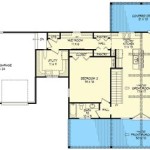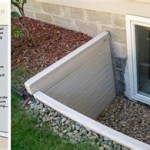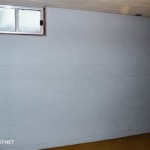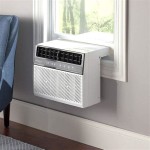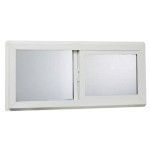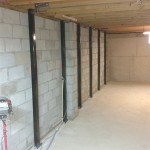Is R13 Insulation Good for Basement Walls?
Basements present unique insulation challenges. Unlike above-ground walls exposed to consistent temperatures, basement walls contend with fluctuating ground temperatures and potential moisture issues. Choosing the right insulation is crucial for energy efficiency, comfort, and preventing moisture problems. This article examines the suitability of R13 insulation for basement walls, exploring its thermal performance, moisture resistance, and overall effectiveness in creating a comfortable and energy-efficient space.
R-value represents a material's resistance to heat flow. Higher R-values indicate greater insulating power. R13 insulation, therefore, offers a moderate level of thermal resistance. While suitable for some climates and applications, its effectiveness in basement walls depends on several factors, including the local climate, the type of foundation, and the desired indoor temperature.
In regions with milder winters, R13 insulation may provide adequate protection against heat loss. However, in colder climates, higher R-values—such as R15, R19, or even higher—are generally recommended to effectively resist heat transfer through the basement walls and maintain comfortable indoor temperatures. Using lower R-values in colder climates can result in higher energy bills and uncomfortable living spaces.
The type of foundation also influences the effectiveness of R13 insulation. Concrete foundations, due to their high thermal mass, tend to lose heat more readily than wood-framed walls. In such cases, higher R-value insulation is crucial to counteracting this heat loss. For wood-framed basement walls, R13 might be sufficient in milder climates, but colder climates will still benefit from higher R-values.
Beyond thermal performance, moisture resistance is paramount when selecting basement insulation. Basements are susceptible to moisture intrusion from the surrounding soil, especially during periods of heavy rainfall or snowmelt. Using insulation that can withstand moisture is vital to preventing mold growth, structural damage, and decreased insulation effectiveness.
Several insulation types are available for basement walls, each with varying degrees of moisture resistance. Extruded polystyrene (XPS) and closed-cell spray foam are excellent choices due to their inherent moisture resistance. These materials are less prone to absorbing moisture, maintaining their insulating value even in damp conditions. Fiberglass insulation, while less expensive, requires careful installation with a vapor barrier to prevent moisture absorption and maintain its effectiveness.
If considering R13 fiberglass batts, ensure they are specifically designed for basement applications and include a facing that acts as a vapor barrier. This facing must be installed correctly, overlapping seams and sealing any penetrations, to prevent moisture from reaching the insulation.
Another important factor to consider is the overall energy efficiency goals for the home. While R13 insulation provides some thermal resistance, higher R-values contribute more significantly to reducing energy consumption. If maximizing energy efficiency is a priority, opting for higher R-value insulation, even in milder climates, can lead to long-term energy savings and a reduced environmental footprint.
Local building codes and energy efficiency standards also play a role in insulation selection. Some regions mandate minimum R-values for basement walls, which may exceed R13. Consulting local building codes and energy efficiency programs can provide valuable insights into recommended R-values and eligible insulation types.
Proper installation techniques are crucial regardless of the chosen insulation type. Gaps and air leaks significantly reduce insulation effectiveness, leading to heat loss and increased energy bills. Ensuring a tight fit and sealing any gaps around framing members, windows, and doors is essential for maximizing the insulation’s performance.
Furthermore, addressing other sources of energy loss in the basement, such as air leaks around windows and doors, inadequate rim joist insulation, and uninsulated basement headers, can further improve overall energy efficiency. A comprehensive approach to basement insulation and air sealing yields the best results in terms of comfort and energy savings.
In conclusion, while R13 insulation might be suitable for basement walls in specific situations, such as milder climates and wood-framed foundations, it’s crucial to consider the local climate, foundation type, and overall energy efficiency goals. In many cases, higher R-values are recommended for optimal thermal performance and energy savings. Furthermore, selecting moisture-resistant insulation materials and employing proper installation techniques are critical for preventing moisture problems and maximizing the insulation’s effectiveness.

Etw Foundation R 13 Fiberglass Batt In A 2x4 Framed Wall Buildingscience Com

I Have R 13 Exterior Insulation Around My Foundation Do Need More Inside To Finish The Basement Home Improvement Stack Exchange

Basement Wall Insulation Knauf

Basement Blanket Insulation Building America Solution Center

How To Insulate A Basement Wall Greenbuildingadvisor

R13 Vs R15 Insulation Pros Cons And Cost Angi

How To Install Ceiling Insulation In A Basement Or Crawlspace Why You Should R30 R21 R19 R13 Youtube

Owens Corning R 13 Kraft Faced Fiberglass Insulation Batt 15 1 4 In X 93 Bf12 The Home

Inorganic Basement Wall Panels In Stamford Norwalk West Hartford By Expert Contractors To Beautiful Insulated

Basement Blanket Insulation Building America Solution Center
Related Posts
